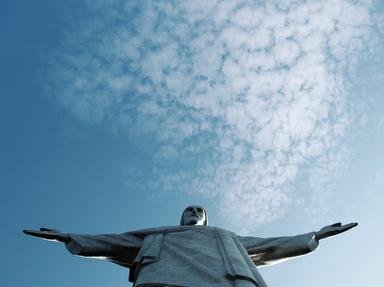Quiz Answer Key and Fun Facts
1. The Banana Wars began around the year 1898, when the United States first established itself as a world power, by defeating which nation in a brief but decisive war?
2. History had shown that the United States concerned itself with the affairs of Central American and Caribbean politics strongly; for example, James Monroe issued a famous doctrine stating that any effort by a European power to colonize the Americas would be considered an act of aggression by the US. Which president issued a namesake "corollary" to the Monroe Doctrine in 1904?
3. One of the earliest countries occupied during the United States as a part of the Banana Wars was Cuba, which had come under American rule after the Treaty of Paris of 1898 and the 1899 Teller Amendment. In 1901, the Platt Amendment was passed, guaranteeing American influence in all spheres of government. It also sold which Cuban geographical landmark to the American government?
4. The United States intervention in Panama in 1856 led not to the Banana Wars, but instead to the Watermelon War, an uprising that granted the Americans several territories along the Panamanian isthmus. By 1903, Panama was ready for autonomy, and with the help of the United States, declared its separation during the Thousand Days' War. Which South American country was Panama a part of at the time?
5. Because Central American countries were so heavily dependent on agriculture, a new derogatory term for the struggling independent nations was coined by American short story writer, William Sydney Porter (better known by his pen-name, O'Henry). What phrase did Porter use to describe the nation of Honduras while he was hiding there in the late 1800s?
6. The First and Second Caco Wars were important aspects of the Banana Wars fought in a country occupied by the US between 1915 and 1934. American occupation improved education systems and living conditions, and also rebuilt the infrastructure (which sadly wasn't strong enough to withstand a brutal 2010 natural disaster). In which Caribbean country did the American system replace a French-influenced society?
7. The presidency of William Howard Taft in 1909 began a new theory of economic intervention in the Americas. The United States would secure the economic well-being of northern Latin America by buying off foreign countries' debts to European countries and guaranteeing that all foreign investments were made to the US. What two-word term was given to Taft's economic policy?
8. Formed in 1899, this company became a major player in United States Central American politics in the early 1900s when it monopolized local produce businesses and gained a stranglehold on national economies. Most famously, this American corporation took control of Guatemala's postal service and became the largest employer in Central America. What was this economic giant specializing in tropical produce, well-known in Latin America as "el pulpo"?
9. In 1912, the United States invaded Nicaragua and maintained control over the country for more than 20 years. One man that it captured became a hero in Latin America in the movement against American imperialism, and his name was used by the FSLN when they lodged a coup against the Nicaraguan government in 1979. Who was he?
10. The Banana Wars finally ended around 1934, when then-president Franklin D. Roosevelt announced his new plan for Latin America, which, according to a December 1933 speech, was "opposed to armed intervention." What name was given to FDR's new plan, a name which was borrowed by the Church of the Latter-day Saints around the same time?
Source: Author
adams627
This quiz was reviewed by FunTrivia editor
bloomsby before going online.
Any errors found in FunTrivia content are routinely corrected through our feedback system.

